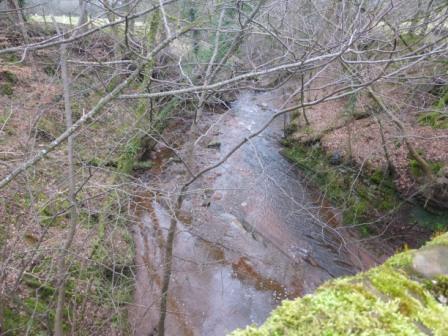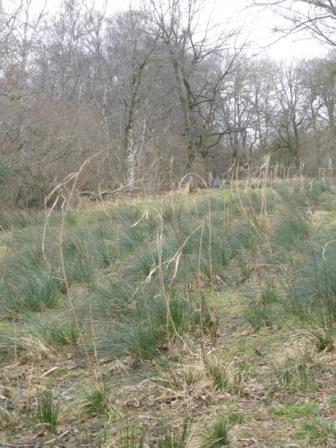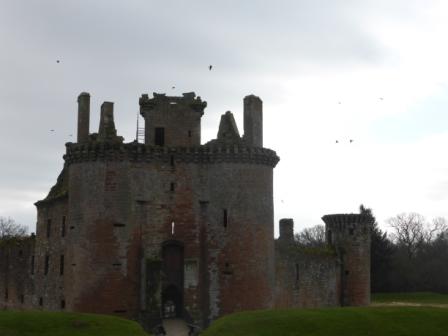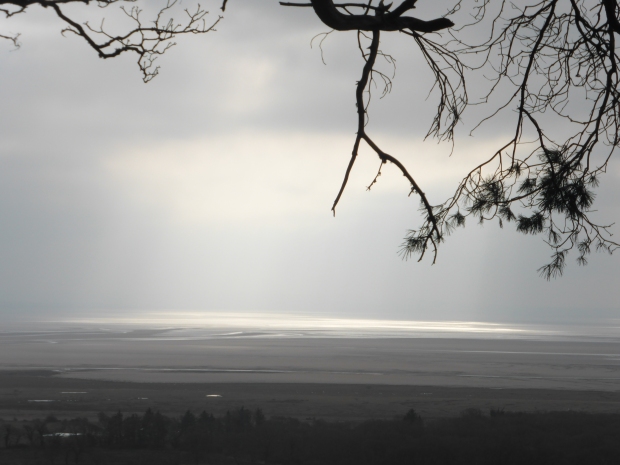After visiting the site of the Battle of Arfderydd, we chose to stay in the Nith Hotel at the mouth of the estuary as it was close to Caerlaverock and because I wondered whether, like Neath, there was a connection with Nudd and his son, Gwyn. I went with no strong expectations or feelings.
When we arrived at the car park I was utterly blown away. Clouds dark blue and dappled silver were reflected perfectly in still quiet waters. Splitting the silence hollering overhead flew drove after drove of barnacle geese following the river’s course then disappearing from sight at the estuary.
Earlier we had accidentally spooked a field filled with these magnificent birds. With barking cries and clamouring wings they took off flashing black and white, ascending into hurtling v’s.Shortly afterward a covey of swans flew over honking deep and resonant calls.
 In the folklore of Wales, northern England (and beyond) ‘the Wild Hunt’ is associated with flights of swans and geese. Gwyn is one of its leaders. The term is usually limited to instances where the birds cannot be seen and those who hear them fear for their lives and souls.
In the folklore of Wales, northern England (and beyond) ‘the Wild Hunt’ is associated with flights of swans and geese. Gwyn is one of its leaders. The term is usually limited to instances where the birds cannot be seen and those who hear them fear for their lives and souls.
My experience in this case was more of beauty than terror. The estuary of the Nith where sky met river and Criffel displayed its otherside in the lucid water was clearly a liminal place. There was something deeply magical about the passing birds and their wild song.
This reminded me a translation of Annwn (the Brythonic ‘otherworld’ Gwyn rules) is ‘the deep’. Annwn as hidden depth has intriguing resonances with the sound of ‘Nudd’. Onomatopoeically it links not only to Neath and Nith but the concepts beneath, underneath and the netherworld. This evening showed Annwn’s depth is immanent in this-world and can be experienced here.
Later on the brink of sleep I found myself thinking of Nudd / Nodens’ temple on the estuary of the river Severn. People made votive offerings to him as a god of hunting, healing and dream then slept in a designated space and priests interpreted their dreams in the morning.
Recently I discovered Nudd is not only the name of a family of Brythonic gods but also a human family name. Dreon ap Nudd fought on the dyke of Arfderydd not far from the Nith. His father, Nudd Hael, is included in the genealogies of the Men of the North. In the Yarrow valley lies a memorial stone to ‘the illustrious princes Nudus and Dumnogenus. In this tomb lies the son of Liberalis.’ Tim Clarkson says ‘Nudus is a Latinisation of Nud or Nudd.’
It seems possible this ancient northern family derived their name from Nodens / Nudd and that he was their ancestral deity and they may have served him in a similar way to the priests on the Severn. Preparing to slip into the netherworld, ‘the land of Nod,’ I wondered how many other worshippers of Nudd and his kindred had slept on Nith’s estuary.
In the morning when I awoke the barnacle geese were flying back up river to feed on the fields and salt marsh. Several groups landed on the banks and by making a careful approach we managed to draw close enough to photograph them.
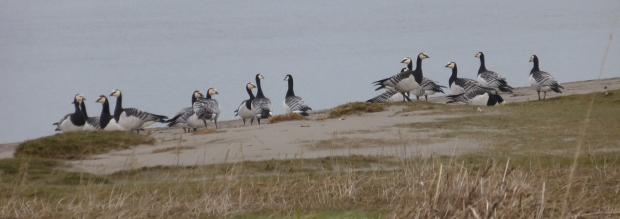 Barnacle geese possess some fascinating folklore. It was once believed they grew on driftwood like barnacles hanging down from their beaks until they grew a coat of feathers and were ready to fly away. Their growth from barnacles in summer explained why they only appeared as birds in the winter months.
Barnacle geese possess some fascinating folklore. It was once believed they grew on driftwood like barnacles hanging down from their beaks until they grew a coat of feathers and were ready to fly away. Their growth from barnacles in summer explained why they only appeared as birds in the winter months.
Visiting the Caerlaverock Wildfowl and Wetlands Trust we found out the ‘real’ reason they can only be seen in winter. Barnacle geese incubate their eggs and raise their goslings in Svalbard in Norway between May and September when the Gulf Stream melts the ice. As winter approaches they fly 3000 km south to the Solway Firth.
In the 1940’s there were only 300 birds. Due to the work of the trust there are now over 30,000. However, if global warming continues it is possible that ice melting early in Svalbard will leave their eggs vulnerable to being eaten by polar bears.
As well as finding out more about barnacle geese we got to see whooper swans up close at feeding time. Whooper swans are another over-wintering bird who fly in from Iceland and can be told apart from mute swans by their yellow beaks.
 It is my growing intuition that Gwyn, as a god of winter, may have a connection with birds over-wintering in Britain and that this would vary from place to place.
It is my growing intuition that Gwyn, as a god of winter, may have a connection with birds over-wintering in Britain and that this would vary from place to place.













